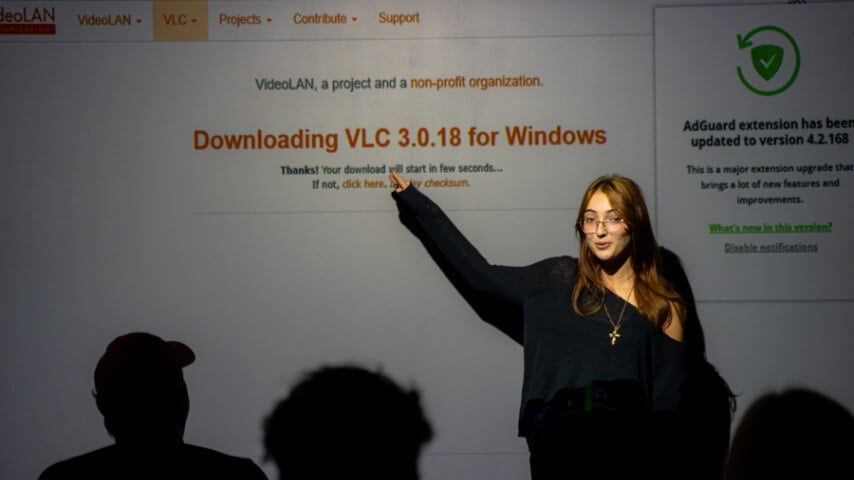Upgrade your office presentations: the easy way to create a seamless interactive projection screen wall
Say goodbye to boring presentations. With a clever upgrade, you can quickly transform your meeting spaces into dynamic collaborative platforms.
Imagine captivating presentations that fill entire walls, creating an immersive experience for your team or clients. And what if you could interact with them with a simple touch? White projection screen paints make this a reality — all at a budget-friendly price.
Intrigued? If you’re looking for a way to completely transform your office presentations without breaking the bank, keep reading.

How to create a seamless interactive projection screen wall in your office?
The simplest way to create a built-in projection screen is to use white projection paints. These advanced paints are designed to transform any smooth surface — plaster, wood, wallboards, concrete, metal, or composites — into a high-end projection screen that delivers superior image quality, plus a bunch of other unique benefits.
Our white projection paints are available in three different variants — White Projector Screen Paint Pro, Short Throw Projector Screen Paint, and Interactive Projector Screen Paint. It starts with selecting the right paint for your space and requirements, and that’s what we will discuss next.
Selecting the right projection screen paint
White Projector Screen Paint Pro is a top performing, general use projection paint, ideal for clear and bright projection images in meeting rooms. The Short Throw Projector Screen Paint is designed to specifically work with short throw projectors, typically placed 3 to 8 feet away from the projection screen. They are often used in comparatively smaller rooms.
Interactive Projector Screen Paint, on the other hand, takes the whole projection screen game to a new level by introducing interactivity. It lets you touch the projected images on the screen with your fingers to interact with it by using an interactive projector.
For an optimum projection experience, factors like ambient light, viewing angle, and your projector type should also be taken into account. Here’s a quick guide on how to make those choices.
Understand the room’s lighting conditions
Selecting a projector wall paint that’s designed for your room’s lighting conditions will ensure vibrant images and a better viewing experience.
Typically, if the meeting room has proper light controls or there’s minimal to no ambient light, a projection paint with a gain value of 1.0 or lower will offer a good viewing experience. Conversely, if your room is brighter, with significant ambient light, a projection screen paint with a gain higher than 1.0 will create more vibrant images.
All our white projection screen paints have a gain value in the range of 1.21 – 1.25 at 90 degrees. Which makes them ideal for recreating clear, sharp and bright images even in moderate to high ambient light conditions.
Consider the viewing angles
The viewing angle of a projector wall paint tells us how wide a viewing area the paint can support without any loss in projected image quality.
If your seating arrangement is mostly at the center of the screen, a projector paint with a narrower viewing angle will suffice. But, for wider seating arrangements, where viewers will see the screen from different angles, you need a projection surface paint with wider viewing angles.
Our white projection paints boast a viewing angle of 140 degrees, ensuring perfect image quality even for setups with wider seating arrangements.
Compatibility with your projector
Every projection screen paint is designed to work best with certain types of projectors. So, if you already have a projector, ensure that the paint you choose will work seamlessly with it. If you are planning to get a new projector, buy one according to the specifications of your projector wall paint to avoid any compatibility issues.
For example, our Short Throw Projector Screen Paint is designed to deliver the best output when paired with any short throw projector with up to 4K Ultra HD projection capacity. Whereas our Interactive Projector Screen Paint works only with short, medium, and long throw interactive projectors.

Once you have selected the paint, next, select the surface where you want to have the screen. Any texture on the surface can distort the projected image, so look for one with a smooth finish. Not only the walls, but you can also turn any glass partition or wooden furniture into a projection surface with our projection paints.
What is the maximum area that can be covered by the paint, and how can it be measured and marked?
There’s practically no limitation about how much area you can cover — your projector surface can be as large or as compact as you want. Our white projection paints are available in two different kit sizes. One small paint kit covers 48 ft2 area, creating a 120” screen at a 16:9 aspect ratio. The large kit covers 270 ft2 area for a 301″ screen at a 16:9 aspect ratio.
You can measure the area you want to paint with a normal measuring tape and then mark it with masking tapes from all sides before you start painting. This will ensure smoother borders and a chic look.
How to apply projection screen paint?
Our projection screen paints are DIY-friendly and come in kits that include all the necessary application accessories — a roller, roller handle, and in some cases, even a primer. There’s also a step-by-step application guide in it.
However, if you’re covering a wide area or an entire room, getting some help can make it hassle-free. Here’s a quick breakdown of the steps.
Check this video for a step-by-step guide:
1. Prepping the surface
The process starts with preparing the surface. Once you have decided where you want to have the projection screen, measure and mark the area that you want to cover.
- Clean the surface thoroughly from any dirt and loose material
- Fill out any gaps or cracks on the surface with a high-quality sealant, ensuring a level finish.
- Sand the surface lightly and get rid of all the debris
- The surface must be completely dry before you start priming
2. Priming the surface
Typically, you should prime the surface before putting on the projector wall paint. The Smart White Projector Screen Paint Pro and Interactive Projector Screen Paint kits include Smart White Primer.
The Short Throw Projector Screen Paint, on the other hand, might be applied directly on an existing paint, if it’s white and in good condition. However, in case the surface is bare,has defects or not painted, priming and preparing it first is a must.
- You should apply two coats of the Smart White Primer on the prepared surface
- Let the first coat dry completely before sanding it lightly.
- Follow with the second coat and let it dry completely
- Once done, check that the surface is totally smooth
3. Applying the projector paint
Once the surface is primed and ready, it’s time to apply the projector paint.
- Stir the paint well in its container
- Use the roller supplied with the kit to paint an even layer on the primed surface
- Leave it for 2 – 4 hours to get dry completely
- Now use the same process to apply the second coat and let it dry
- The paint will be dry-to-touch in 1 hour and ready to use after 24 hours
Adding a border to the projection screen can uplift the overall viewing experience. However, a border isn’t necessary and it won’t work for your setup if you’re turning an entire wall into a projection screen.
Use our white projection paint and experience how it elevates your meeting rooms and office presentations in a blink. Not sure about the best option for your space? Get free assistance from our experts.

